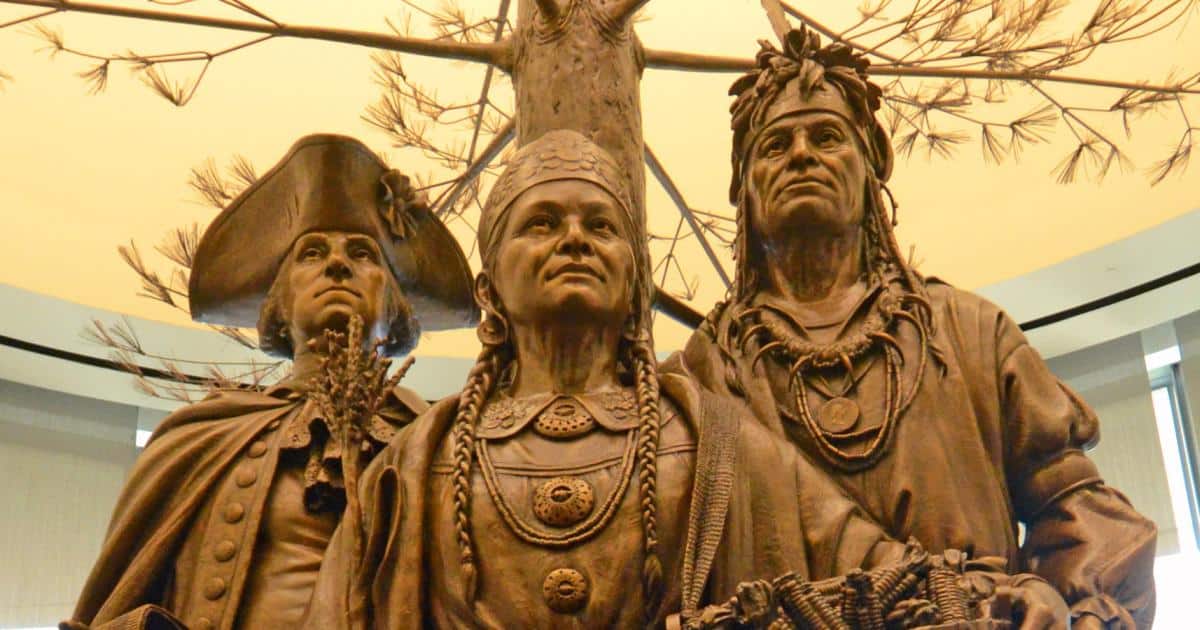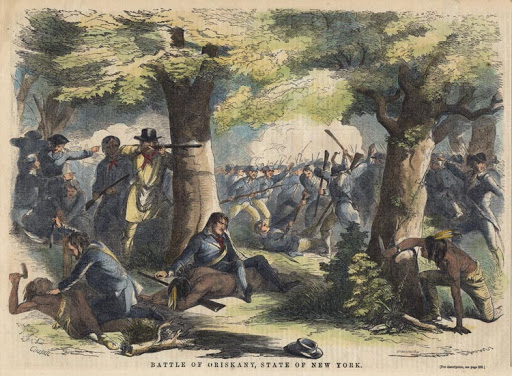The Oneida Indian Tribe was part of the Iroquois Confederacy when Europeans arrived to colonize the New World.

They would become one of the few Native American tribes to side with the Americans during the American Revolutionary War. Later, they would be removed from their lands and pushed towards Wisconsin. Today, they are federally recognized in Wisconsin and New York.
History
During the early 17th century, the Oneida Indian tribe resided around central New York State.
The Treaty of Fort Stanwix was signed in 1768 between the Oneidas and the colonists of New York that established borders. The borders were then re-established in the 1784 Treaty of Stanwix shortly after the American Revolution.
American Revolution
When the American Revolution broke out between Great Britain and the 13 original colonies, the Oneida tribe, despite their loose confederacy with the Iroquois, stayed neutral. However, as the war persisted, the Oneida tribe would be forced to pick a side. Some of the tribes sided with the English, but most would ally themselves with the Americans.
Another primary reason they allied with the Americans was due to the influence of the missionary Samuel Kirkland, who had converted many in the tribe to Christianity. The Oneida now shared a common religion with the colonists.
This would not sit well with Mohawk leader Joseph Brant, who wanted to establish an independent Native American nation.
The Oneida would contribute much to the American cause.
- Their warriors were often used to scout on offensive campaigns and assess the enemy's operation around Fort Stanwix.
- They also provided an open line of communication between the Continental Army and the Iroquois.
- They participated in the Battle of Oriskany. Included in the battle were 50 Oneida, and among them was the woman warrior Tyonajanegen and her husband, Han Yerry.
- The Oneida formed friendships with Philip Schuyler, George Washington, and the Marquis de Lafayette.
- Chief Skenandons helped aid the starving rebel army by sending them bushels of maize. Among the Oneida was the native Polly Cooper.
- Polly Cooper showed the Continental Army how to cook and eat the corn properly. Washington's intentions were to pay cash to Cooper for her generosity, but she refused to accept compensation because she said it was her duty to serve her country.

Although leaders of the tribe had taken the colonists' side, individuals within the decentralized nation could make their own decisions about alliances. A minority, who were already a faction supporting the sachems, supported the British.
As the war progressed and the Oneida position became direr, this minority grew more numerous. This minority would undercut the relationship that was formed early in the war.
When patriot colonists destroyed the important Oneida settlement at Kanonwalohale, numerous Oneida defected from the rebellion and relocated to Fort Niagara to live under British protection.
In 1794, the Treaty of Canandaigua created the first Indian reservation in New York. Over time, the Oneida would continue to be displaced and eventually moved to Wisconsin.
However, the Oneida continues to fight through litigation to claim the land they lost in New York over the years.
The Oneida Nation of Wisconsin is recognized as a sovereign nation.
Culture
Food: The Oneida evolved to learn how to survive the cold northern winters by storing dried meat and fruits. They were a combination of a hunter-gatherer society with an ability to sustain consistent agriculture. This is what allowed them to thrive in the region for many years prior to the arrival of the Europeans.
Family: The people have a matrilineal kinship system, and children are considered to be born into the mother's clan, through which descent and inheritance pass. Each gender, clan, and family unit within a clan has particular duties and responsibilities in the tribe.
Religion: The Oneida, prior to the arrival of the Europeans, had a similar religion to other natives in the region. Many would convert to Christianity prior to the American Revolution due to the influence of Samuel Kirkland.
Housing: Many lived in Longhouses, which was common among the tribes of the Iroquois Confederacy.
